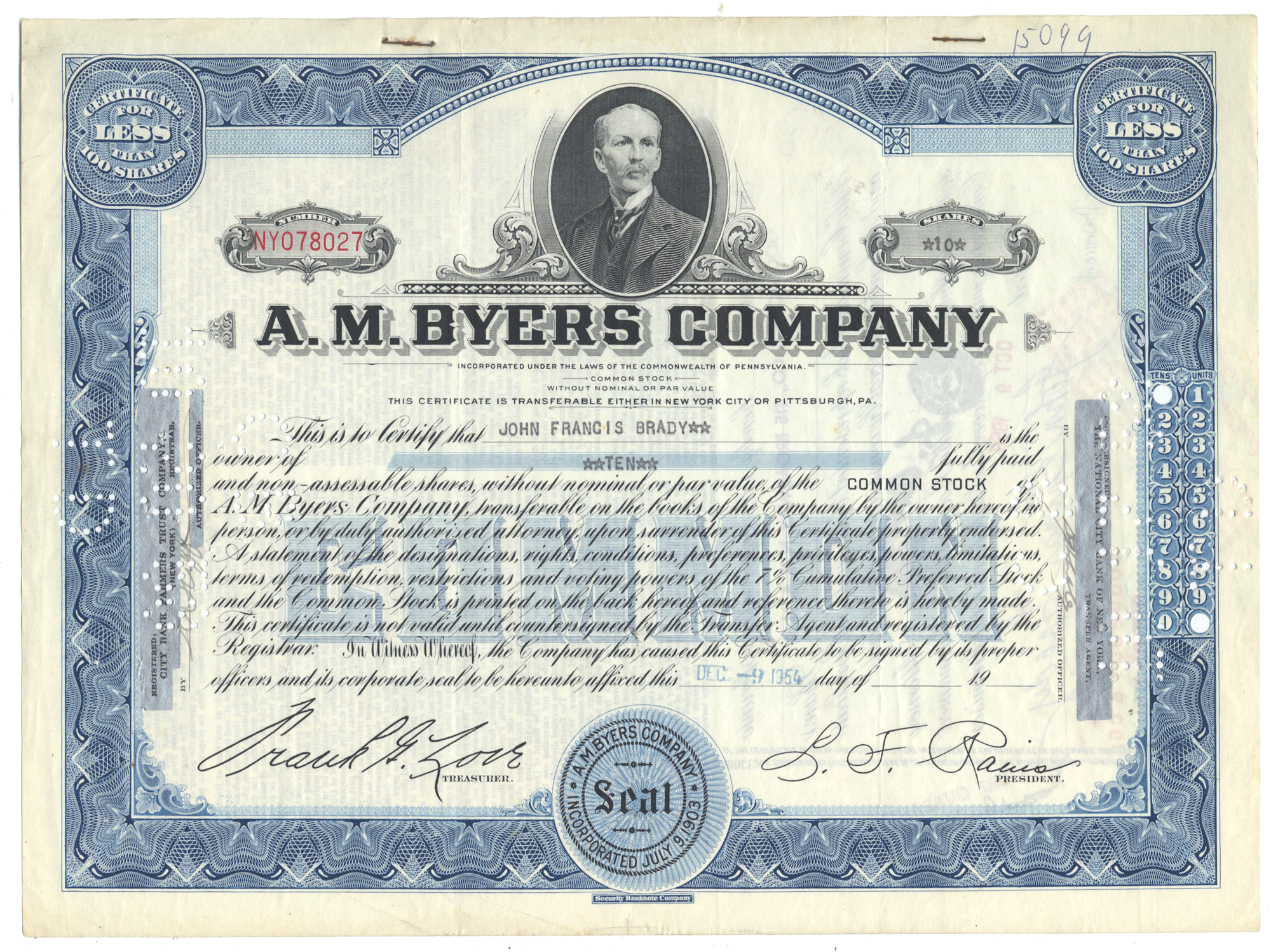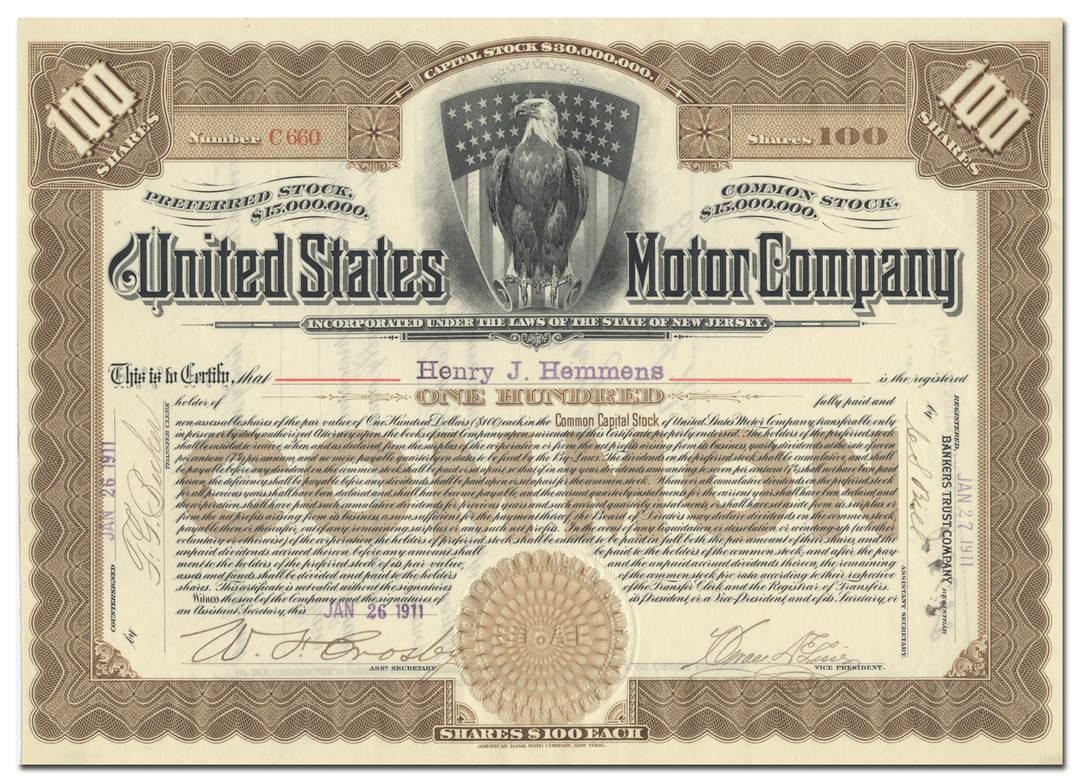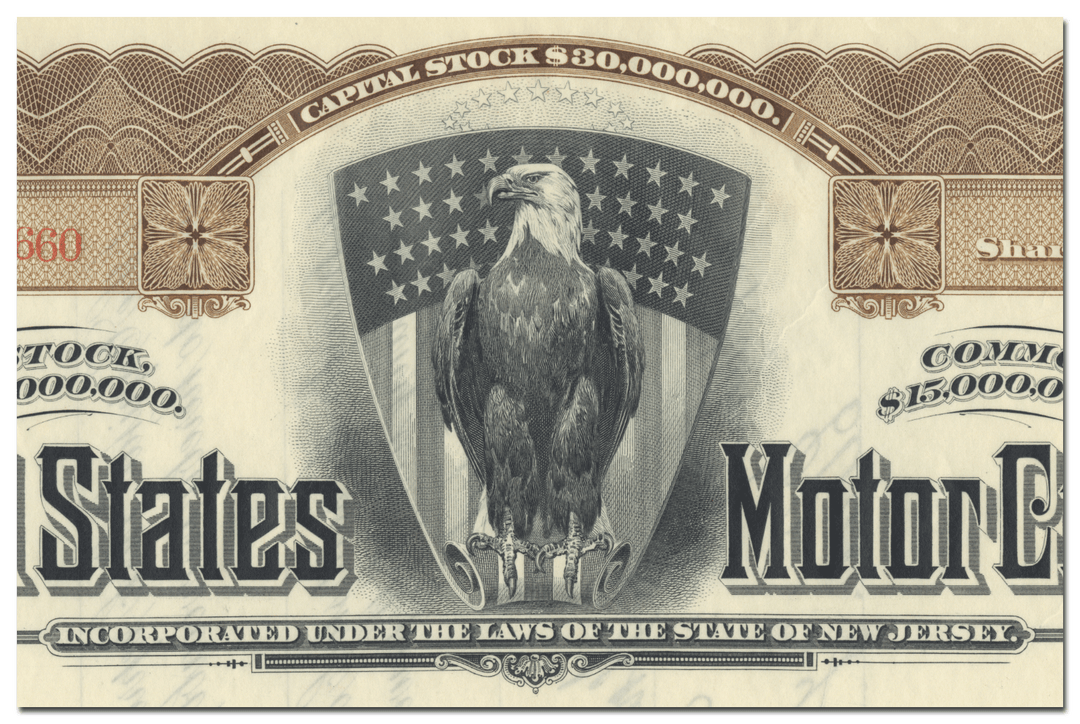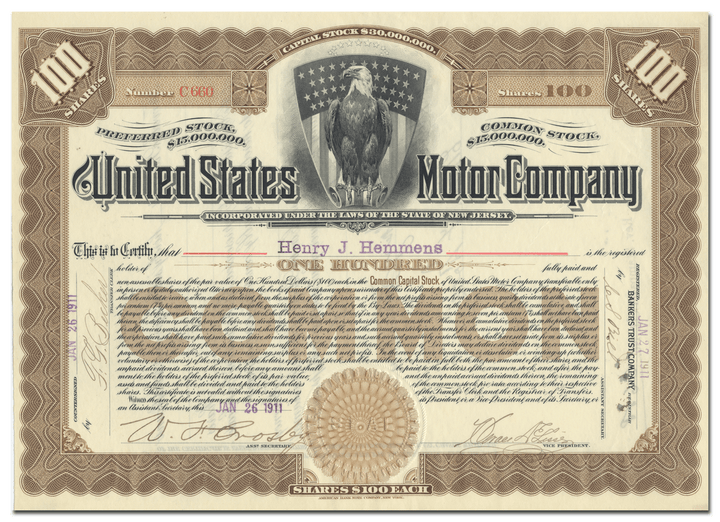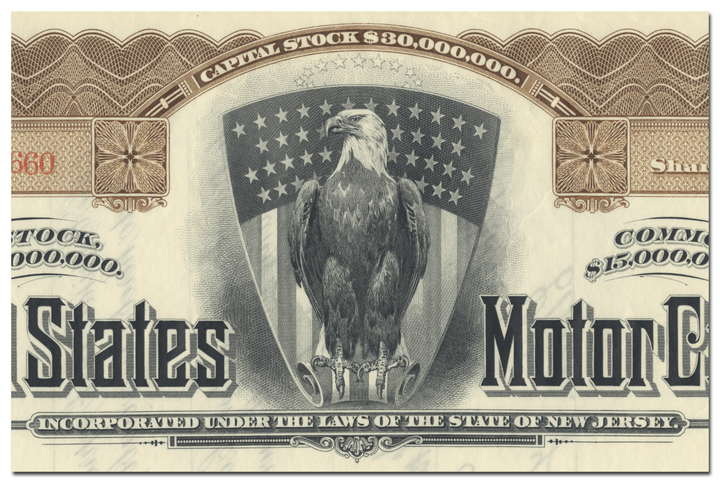United States Motor Company
- Guaranteed authentic document
- Orders over $75 ship FREE to U. S. addresses
Product Details
CompanyUnited States Motor Company
Certificate Type
Common Stock
Date Issued
January 26, 1911
Canceled
No
Printer
American Bank Note Company
Signatures
Hand signed
Approximate Size
10 3/4" (w) by 7 3/4" (h)
Images
Show the exact certificate you will receive
Guaranteed Authentic
Yes
Additional Details
NA
Historical Context
The United States Motor Company (USMC) was organized by Benjamin Briscoe in 1910 as a selling company, to represent various manufacturers. It had begun life as the International Motor Company in 1908 in an attempt to create the first major consolidation within the industry with Maxwell-Briscoe and Buick, which did not succeed. International Motor was renamed USMC in December 1909. By the end of 1910 there were 11 constituent companies, each still headed by the individual who had built each company originally. During 1910, rumors surfaced that United States Motor Company was going to merge with General Motors, but Briscoe scotched the rumors by stating that any attempt to integrate General Motors into USMC would create chaos.

This was an effort to try to save several independent automotive manufacturing companies who were having great difficulty in getting the necessary financial backing. Those companies included: Maxwell, Stoddard-Dayton, Grabowsky Motor Vehicle Company, Briscoe Manufacturing, Courier Car Co, Columbia Automobile Company, Brush Motor Car Company, Alden Sampson Trucks, Gray Marine, and Providence Engineering Works, with the Thomas and other lines coming aboard later.
1910 production announced in mid-year included 15,000 Maxwells, 10,000 Brush Runabouts, and 10,000 of the Stoddard-Dayton, Columbia, and Alden Sampson Trucks. Later in 1910, Briscoe formed United Motors International, Ltd. to handle international sales of the United States Motor Company, focused mainly on England.
Announcing some price reductions for 1911 models, the company stated that it had 18 plants with combined floorspace of 49 acres with 14,000 employees capable of producing 52,000 vehicles. There were 52 models offered in 1911. It was claimed that there was no left over stock of unsold cars from the 1910 model year and that business was up fifty-seven percent from the year earlier period.
Briscoe several times complained that the antipathy of bankers to the automobile industry was hampering growth. In early 1912, the company suspended dividend payments on its preferred stock and in September 1912 year went into receivership. The bankers attributed the failure to bad management. A conflict between two of its backers, who also had a financial interest in General Motors, led to the downfall. Briscoe retired in late 1912 and was replaced by Walter E. Flanders as manager for the receivers committee. The assets of the United States Motor Company and constituent companies were sold for $7,080,000 at a public foreclosure sale in January 1913.
The USMC assets were purchased by Walter Flanders, who reorganized the company as the Maxwell Motor Company, Inc. This was the only surviving member of the group. In the early 1920s this company was reorganized and became Chrysler.
Related Collections
Additional Information
Certificates carry no value on any of today's financial indexes and no transfer of ownership is implied. All items offered are collectible in nature only. So, you can frame them, but you can't cash them in!
All of our pieces are original - we do not sell reproductions. If you ever find out that one of our pieces is not authentic, you may return it for a full refund of the purchase price and any associated shipping charges.




